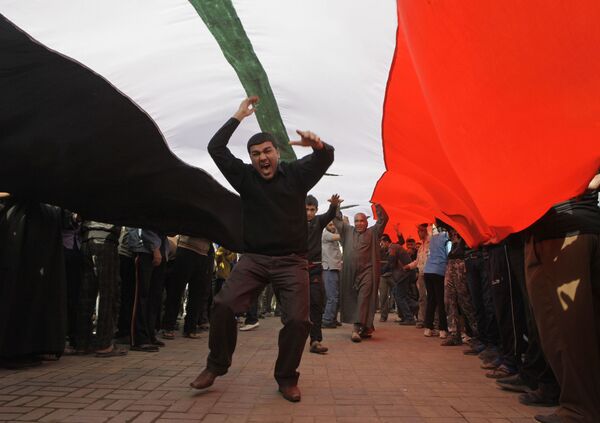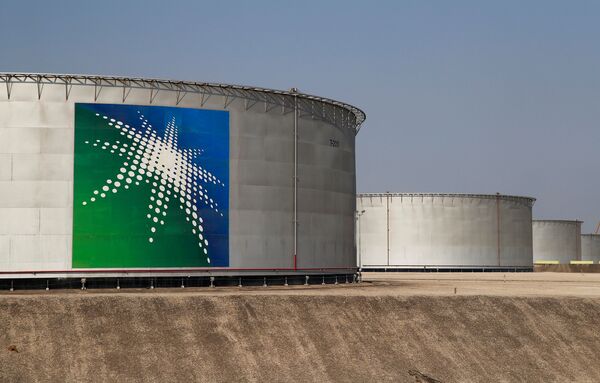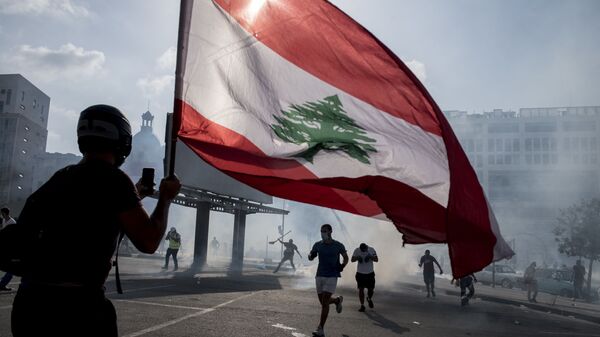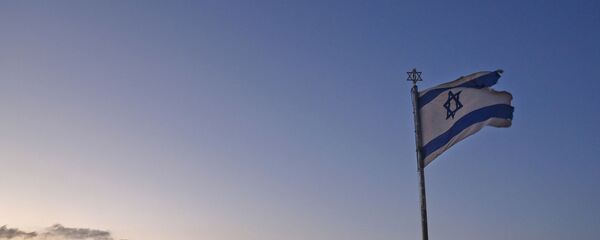Economic Domino Effect Cripples Lebanese, Syrian Economies
As the world braced for the upcoming economic shock from the COVID-19 pandemic, one middle-eastern nation, in particular, was already reeling under what experts described as the worst economic crisis since its independence. Beginning as early as in the fall of 2019, the ongoing Lebanese economic crisis decimated the Mediterranean nation’s economy, starting a ripple effect that was felt across the entire region.
Previously boasting the status of the region’s banking capital, Lebanon’s banking secrecy laws governing the Mediterranean nation’s 65 banks, coupled with high interest rates on US dollar deposits, have instilled confidence in the Lebanese financial system, reeling in clients from across the region.
Reinforced by the effective mitigation of the 2008 global economic crisis, Lebanon’s central bank governor, Riad Salame, was hailed as a hero both locally and globally. This confidence, however, soon turned to hubris, culminating in the creation of what is described as a "ponzi scheme" on a national scale.

"During the 2008 crisis, the Lebanese banks were sustained because all liquidity is in Lebanon, Lebanon was central with correspondent banking, so the banks and central bank looked like heroes and won prizes as a very solid banking system. However, the real money was spent… to fund the budget deficit, to fund the Lebanese Electricity Company, to fund imports and to defend the exchange rate. Between imports and electricity and defending the peg, they depleted over $80-100 billion, this is the reason for the crisis," Lebanese economic expert Dr. Hassan Khalil told Sputnik.
With multiple warning signs appearing as early as January 2019, the country’s population felt the first signs of the crisis in late August of the same year, as depositors found it increasingly harder to withdraw their US dollar savings. The circumstances forced open the floodgates for black-market currency exchanges, which led the country’s currency, the Lebanese pound, to begin a downward spiral as the country’s banks initially limited US dollar withdrawals in October 2019, then completely halted them as the COVID-19 pandemic hit the country in March 2020.
In an attempt to salvage the financial system’s reputation, the country’s central bank formally maintained the official currency-exchange rate, pegged since 1997 to 1,515 Lebanese pounds to the US dollar, while indirectly admitting to a liquidity crisis by allowing depositors to withdraw their dollar savings in Lebanese pounds at an exchange rate of 3,850. Meanwhile, the national currency’s black-market rate spiraled out of control, peaking at 8,800 to the greenback by mid-October.
"The banking sector in Lebanon is insolvent, it’s bankrupt, although this is undeclared bankruptcy because all deposits are still numbers on the books … Now, the central bank is not declaring that it doesn’t have the money, it is saying that it will take it years to return them, and therefore the banks and the deposits cannot be declared as lost, or wiped out or what we call, or written off against the related provisions against [impairment] losses." Dr. Khalil added.
While initially appearing to be confined to Lebanon, the economic crisis rapidly spread to neighboring Syria: coupled with the aforementioned banking secrecy laws, Lebanon became a transactional "window" for businessmen from a number of beleaguered countries and groups in the region, allowing them to conduct international trade and financial transactions in circumvention of international sanctions.
This triggered close scrutiny from the US, followed by sanctions initially targeting Hezbollah financial activities under the 2015 Hezbollah International Financing Prevention Act and its subsequent 2018 amendment, causing two Lebanese banks to shut their doors on the eve of the country's economic crisis. Additional US sanctions were imposed in November under the Magnitsky Act for corruption on Gibran Bassil, former Lebanese Minister of Foreign Affairs and head of one the country's largest political parties and Hezbollah ally, the Free Patriotic Movement.
The "window" offered by the Lebanese financial system also proved invaluable for a number of Syrian businessmen who have deposited between $20 and $42 billion in Lebanon’s banks to finance their imports into Syria. These figures were cited by Syrian President Bashar Assad earlier in November, who highlighted that his country’s economic crisis was triggered by the inability of Syrian depositors to access their hard-currency accounts in Lebanese banks.
"Lebanon has historically played the role of banking heaven to Syrian depositors and traders due to the differences in economic regimes between the two countries. It is almost impossible to know the size of Syrians' deposits in Lebanese Banks due to banking secrecy obligations. The figure presented by President Assad is rather a rough estimate that may include a capital flight to Lebanon and deposits of non-resident Syrians," economic expert and Vice President for Development at the Lebanese German University Dr. Pierre Al-Khoury told Sputnik over the phone.
In a manner not too dissimilar to its Lebanese counterpart, the Syrian pound’s black-market value dipped by a factor of three by mid-April, to eventually stabilize at a rate of 3,000 Syrian pounds to the dollar.
Catalyzed by unrest within Syria, specifically the refusal of the Syrian Democratic Forces (SDF) in control of the country’s "breadbasket" in the north-east to supply government-controlled parts of Syria with oil and wheat, the inability of Syrian merchants to access vital hard currency reserves needed to pay for imports has caused a "chaos of prices", rendering a number of staple foodstuffs unattainable for a large portion of the country’s population, coupled with fuel shortages amid an acute fuel crisis.
"$30 billion for Syria is a large amount, and it was the money of traders funding trade with Syria. The latest sanctions under the Caesar act also … that’s it, once you’re in the well, it's very hard to come out, so the Lebanese crisis fueled the Syrian crisis, as Lebanon is a gate for Syria." Dr. Khalil added.
Syrian depositors were not the only non-Lebanese to be locked out of their hard-currency reserves by the liquidity crisis — Former Iraqi Deputy Prime-Minister Baha Araji stated in July that around $20 billion US dollars worth of Iraqi depositors’ money was locked away in "bankrupt" Lebanese banks, while a report published last May by the independent Yemeni Sana’a Center for Strategic Studies indicated that around 20 percent of Yemen’s foreign currency reserves stored abroad were deposited in Lebanese financial institutions.
Meanwhile, under pressure from an outraged populace that has been protesting for over a year to date and facing a gripping political deadlock, the Lebanese elite has found itself incapable of forming a reform-minded government as the first step to unlock a vital International Monetary Fund (IMF) bailout package, prompting harsh criticism from French President Emmanuel Macron, who visited Lebanon twice since the deadly Beirut port blast on August 4 and initiated a roadmap for the country’s next government to unlock international aid.
"There is a belief that the IMF is evil, and that their reforms are anti-poor. Those reforms are forcing themselves directly without the IMF. Very soon, there will not be subsidies, and the IMF will request subsidies to be removed. Secondly, the IMF will request the shrinking of the labor force, which is already shrinking automatically… Thirdly… IMF and donor nations will not anymore salvage the situation without political reform, and if this happens it’s going to take us years and years." Dr. Khalil remarked.
Sectarian System Challenged By Iraqis, Lebanese Amid Regional Rivalries
Protesters took to the streets in droves across the Arab world in what observers called "The Second Arab Spring," a series of protests that started in Morocco in April 2018 and spread across 11 Arab countries over the following two years.
While the majority of the protests were held in countries with large degrees of religious homogeneity, three of the affected countries stood out as clear outliers: voicing discontent at the economic conditions and systematic corruption in respective countries akin to their Arab brethren, the widespread protests in Lebanon and Iraq have exhibited distinctive sectarian undertones, while the more compact and brief protests in Syria’s As Suwayda province were linked to economic sanctions.
While the political systems and sectarian makeups of Lebanon and Iraq are quite distinct, each of them is characterized by deeply-rooted sectarian divides, leading a number of observers to label the protests therein as a rebellion against the consociational political systems established in these countries over the course of decades that had led to a fragmentation of their societies along sectarian lines.
"We are witnessing the second wave that should benefit from the shortcoming of the first wave, but let’s consider that the social structure of Lebanon, Iraq and Syria is highly fragmented by the effect of sectarian struggles which was not the case in Tunisia and Egypt," Dr. Al-Khoury added.
When viewed from a broader, geopolitical perspective, the protests in Lebanon and Iraq share yet another theme: the political landscapes of both countries have been increasingly dominated by foreign powers, most notably Iran, whose predominantly Shiite Muslim proxies and allies in the region have been perceived as major contenders for domestic political power by the members of the two countries’ other religious groups. Coupled with rampant corruption and economic unease, an overall sense of distrust in the two countries’ political establishment was instilled among their general populations, adding to the general discontent with the sectarian system.

"All is possible as scenarios, the hybrid nature of state-community relations levy high risk of chaos in the region. Additionally, most Arab societies lack nationalistic immunity and this opens doors for international interference. The risk of violence is always present with and without Arab Spring since the key of such violence is the increased tendency towards forms of failed states that cannot absorb and include its youth in the economic cycle." Dr. Al-Khoury remarked when asked about the possibility of sectarian tensions growing in light of the events in question.
Described as "Sectarian Authoritarianism" by a number of observers, the protests in Iraq and Lebanon took the two countries’ establishments by surprise in late 2019, as protests with a broad anti-elite and anti-sectarian agenda erupted in various cities throughout the two countries to include areas that were traditionally considered to be the strongholds of pro-Iranian political parties, particularly the central and southern provinces of Iraq and south Lebanon.
While not initially directed against a specific party or group thereof, the protesters soon began to focus on pro-Iranian groups after strong statements of condemnation were made by the leaders of the latter, with the Secretary General of Lebanon’s Hezbollah party, Sayed Hassan Nasrallah, decrying the protests as foreign interference that risks dragging the country into another civil war.
These sentiments were echoed by the Secretary General of Iraq’s Asa'ib Ahl al-Haq party, Qais Khazali, who denounced the protests as backed by the US, Israel and the UAE, with the aim of inciting strife and chaos in the country.
Despite not elaborating on their statements, these allegations led to the outbreak of violence, as protesters clashed with counter-protesters sympathetic to the parties in question, indicating a growing existential concern shared by parties belonging to Iran’s "axis of resistance" across the region amid widespread concerns that these events would lead to the growth of sectarian tensions across the region.
While the sanctions targeted the Iranian petroleum and banking industries in addition to Iranian officials and envoys in Iraq, Lebanon and Yemen, additional sanctions were also slapped on the Islamic Republic’s proxies and allies throughout the region.
One of the countries subjected to direct US sanctions was Syria, and the limitations were cited as one of the direct causes of the protests witnessed in Syria’s southern As Suwayda province in January and in June, the provisions of the Syrian Civilian Protection Act announced in December of last year triggered panic-buying of hard currency, specifically, US dollars.
Coupled with the fallout from the Lebanese economic crisis, the war-torn country’s economy was further strained as the Syrian pound plummeted, with the World Food Programme (WFP) reporting a 152 percent increase in food prices in As Suwayda by April.
"Definitely locking deposits into the banks in Lebanon has affected Syrian traders, but let’s note that Caesar Act was designed to hurt the Syrian channels of business regardless of what went on in Lebanon." Dr. Al-Khoury said.
Triggered by the dire state of economic affairs, the protests erupted in the predominantly Druze-inhabited southern governorate as thousands of locals took to the streets to voice their grievances. Authorities in Damascus were swift to address the issue, with Syrian President Bashar Assad responding by sacking then Prime Minister Imad Khamis.
While far from a deciding factor in Middle Eastern geopolitics, the effects of Trump’s foreign policy agenda have been felt throughout the region, with the prospects of the emergence of a new bloc expedited by the US-brokered Abraham Accords.
Normalization Consolidates Anti-Iranian Middle-Eastern Bloc
The outgoing year was marked by a series of unprecedented normalization agreements between Israel and a number of Arab states, namely the UAE, Sudan, Bahrain, and most recently, Morocco, with Saudi Arabia reportedly undertaking a number of steps towards normalization as well.
While Sudan and Morocco both gave in to US and Saudi pressure, respectively, the trend of normalization between Israel and the two close Saudi allies under the Gulf Cooperation Council (GCC), the UAE and Bahrain, proved to be a great deal more organic.

Brokered by the Trump administration, the Abraham Accord formalized the two Arab monarchies' long-standing unofficial ties with Israel, and coupled with reports of Israeli Prime Minister Benjamin Netanyahu's clandestine meeting with Crown Prince Mohammad Bin Salman in Saudi Arabia, many have speculated that the kingdom will soon follow suit.
"The quickest normalization happened with the UAE, but for Saudi Arabia it is totally different; Saudi Arabia cannot [change] its stance vis a vis the Arab Israeli conflict in days, though there are secret relationships going on, Saudi Arabia will try to await the coming of [US President-elect] Biden to see what’s going to happen in the future. It will give normalization to Biden instead of leaving it to an administration that is finished," Elias Hanna, a retired Lebanese army general and lecturer on strategy, geopolitics and the history of Lebanon at the American University of Beirut and Notre Dame University – Lebanon, told Sputnik.
Although reluctant to formalize its relations with Israel in light of its previous commitment to not do so until a number of conditions towards the Palestinians are met, Saudi Arabia has undertaken several steps to warm up bilateral relations, namely granting Israeli aircraft overflight rights shortly after the UAE signed the Abraham Accord. The kingdom has also reportedly pushed for a number of Arab and Muslim countries to recognize Israel, specifically Morocco earlier in December, with Indonesia and the Sultanate of Oman likely to be the next in line.
"The main issue is that we have two different tracks of normalization; we have the quickest one that goes to the UAE ... And a slow, secret one that goes with Saudi Arabia. For each party of the game, each one has its own goals," Hanna added.
The ongoing "Middle East Cold War" between Iran and Saudi Arabia led to the inclusion of a third party — Israel — into what was described as a potential successor to the Baghdad Pact of the 1950s, or a "Second Middle Eastern NATO".
Iran’s response to the normalization was expectedly harsh, receiving strong condemnation from the country’s president, Hassan Rouhani, who decried the normalization as a "huge mistake" and a "treacherous act".
"This axis of normalization, if you take it geographically, it goes from Israel to Jordan because they have the Wadi Araba treaty, and then you have Saudi Arabia and then the UAE, Bahrain. Oman is reluctant so far, but with time. So it’s really like containing Iran, it’s for security," Hanna added.
While largely motivated by common geopolitical concerns, the normalization process has clear economic undertones: coupled with the fallout from the Russian-Saudi oil price war in March and the economic repercussions of the COVID-19 pandemic that led crude oil prices to dip to a record low, the rich petrostates of the Persian gulf soon found themselves running out of cash. Israel’s economic predicament is not far off, with the IMF forecasting a contraction of the Jewish state’s economy by 6.3 percent this year and its budget to record a 12 percent deficit by the end of the year.

"The Gulf states are struggling as economies; high rates of debt, shrinking of the economy, COVID-19, less demand for oil. For Saudi Arabia the break-even price for a barrel is $70 or more, now it is $42, so there is a deficit. From where can they bring money? From the sovereign wealth fund, they have a fund. But this fund will fund this deficit as well as fund the Yemen war, which really cost Saudi Arabia a big amount of money, so we are in a problem," Hanna said.
The Abraham accords have enabled Israel to establish formal trade relations with the UAE and Bahrain, with deals worth half a billion US dollars reportedly signed between the three countries soon thereafter. These deals grant Israel direct access to the two countries’ oil markets on one hand, while on the other, allow the two Arab states to invest in and obtain Israeli agricultural innovations that are key to facilitating the two desert nations’ food security; a phenomenon that rose to prominence after international supply chains were hit by the COVID-19 pandemic.






